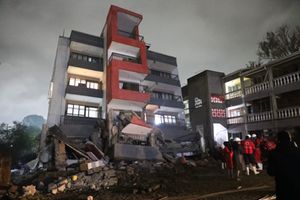Shopping malls glut shifts focus to counties

Greenspan shopping mall in Nairobi’s Eastlands. PHOTO | FILE
What you need to know:
- In 2014, Managers and Mentor Management Limited (MML) predicted that by the end of 2016, there will be over 2.8 million square feet of office space - 19 per cent of the total stock of new buildings delivered since 2009 - lying vacant.
- The industrial market in Nairobi absorbing around Sh3 billion a year in investments, excluding land costs compared to Sh20 billion that goes into commercial office sector.
Investors in real estate may run out of high yielding projects in Nairobi as huge shopping malls join the list of sectors in the industry hit by a supply glut.
According to Britam Asset Managers real estate tracker there is an oversupply in all types of retail space in Nairobi, and in big malls countrywide.
“Beyond the Two Rivers Mall expected to open by the end of this year, no further retail space will be required in Nairobi, as there will be oversupply,” Chief Executive Officer, Britam Asset Managers Limited Kenneth Kaniu said at the East Africa Property Investment Summit (EAPIS) Wednesday.
This comes after several indexes showed that supply glut has it apartments and office space which rode on Kenya’s construction boom over the last decade.
According to a report by HassConsult rental prices in Nairobi recorded a drop in the final quarter of 2015 caused by an oversupply of apartments and falling demands.
Cytonn Investment Management in its Nairobi commercial office market report said that commercial office space in Nairobi could be headed for a glut after 5.4 million square feet of office space was completed in 2015 compared to 3.4 million square feet in 2014.
In 2014, Managers and Mentor Management Limited (MML) predicted that by the end of 2016, there will be over 2.8 million square feet of office space - 19 per cent of the total stock of new buildings delivered since 2009 lying vacant.
Although real estate has continued to offer the most lucrative return on investments, sentiment is high that it might hit a plateau.
Britam asset managers say that investment opportunities have shifted to the counties, industrial, and residential real estate.
“In areas like Naivasha, Kisumu, Nakuru, Nanyuki and Mombasa, there is a lot of opportunity for strip malls that range from 1,000 to 10,000 square feet,” Mr Kaniu said.
NEW FRONTIER
MML in its first ever Industrial Market Report, said that while the industrial sector has not attracted institutional or overseas investment, there was speculation that it would offer the new frontier for growth.
Last year, Nairobi's County Government issued record levels of planning approvals for multi-unit, developer-led industrial/warehouse developments, at 280,000m², the majority of which is expected to be delivered in the next two years.
The industrial market in Nairobi absorbing around Sh3 billion a year in investments, excluding land costs compared to Sh20 billion that goes into commercial office sector.
“The industrial market has changed markedly in the last three years, previously, almost all industrial premises and warehousing was owner occupied, but this year, two thirds of the completions will be for sale or lease,” Mr James Hoddell, CEO of MML said.
MML reported that Embakasi currently leads in the supply of warehouses for lease or sale, with Industrial Area leading in owner occupied warehouses.
However, in 2015, warehouse take-up was as high in Kiambu County and Mavoko sub-County as in Nairobi, with land proving cheaper in the city's outer perimeters, which are benefiting from improved accessibility to the airport as a result of the n





